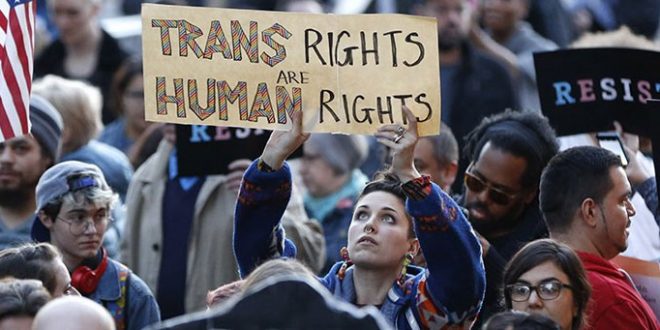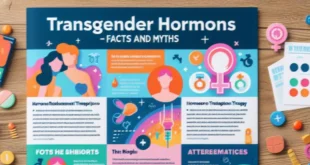Transgenderism is the practice of transgressing gender norms. A Transgender person is someone whose gender display at least sometimes runs contrary to what other people in the same culture would normally expect. Transgender folks come in several flavors:
- FTM (female to male) are people who were born female but see themselves as partly to fully masculine.
- MTF (male to female) are people who were born male but see themselves as partly to fully feminine.
- Intersexed are those born with some combination of male and female physiology [similar to hermaphrodite], who may accept as natural their mixed gender.
Gender variations are more common than most people suspect, because many people hide their true nature out of fear for their safety and security. Many people explore transgender behavior without identifying themselves as transgendered. Women wearing pants may not seem transgender today, but fifty years ago it would have been. Boys wearing “girl’s clothes” might not see themselves as inherently feminine, yet enjoy playing in this way. While crossdressing is enjoyed by both males and females, it appears to be more pronounced in males because of an imbalance in norms of attire and attitude (we see less transgression when a woman wears a suit).
In order to understand the difference between someone who is gay, lesbian, or bisexual, and someone who is transgender, you need to be clear on the distinction between sex and gender. Simplistically, sex is polarity of anatomy, gender is polarity of appearance and behavior. As one becomes more closely involved with transgenderism, these definitions quickly break down, but they serve as a good starting point.
BIPOLARITY
Most people think there are just two sexes, male and female. Such is not the case. People who are intersexed and people who are transsexual constitute sexes which are neither exactly male nor exactly female.
Likewise, gender is not a simple case of “either/or. ” Gender is exhibited by countless signals, from articles of clothing to cosmetics to hairstyles to conversational styles to body language and much more. Though our culture tends to group characteristics into “masculine” and “feminine”, many people find some amount of gender transgression exciting, so there is some fluidity between the two categories. Ultimately, gender is a “mix and match” mode of self-expression, and people within our culture are ever finding new ways to express their gender, with exciting subtleties and intriguing implications.
In general, it works best to think of all effects – sexual orientation, gender identity, sexual identity, and any others – as varying along a continuous spectrum of self-expression, rather than in just one of two or three ways.
SEXUAL ORIENTATION vs. GENDER IDENTITY vs. SEXUAL IDENTITY
Sexual orientation, gender identity, and sexual identity are independent of each other. A person may express any variation of each of these in any combination. To discourage the free expression of identity and orientation by an individual is to impose a damaging burden of conformity.
Sexual Orientation is which sex you find erotically attractive: other (hetero), same (homo), or both (bi). Sexual Identity is how you see yourself physically: male, female, or in between. If someone is born female, but wishes to see their body as male in all respects, their sexual identity is male. It is generally rude to speak of such a person as female, since it denies that person their right to inhabit the social and physical role of their choosing. We refer to such a person as a transsexual, whether or not they have had any surgery. Many FTM transsexuals do not undergo genital surgery, as the results so far are relatively crude and the procedure terribly expensive. As surgical technique improves, such people will be able to achieve more satisfying realizations of their dreams. However, since it is healthier for these people to live in accord with their wishes and heartfelt need, we call them men, though the may have a vagina where one would expect to find a penis.
The situation for MTF transsexuals is equivalent, except that the surgery produces a much more satisfying result, both cosmetically and functionally.
Nonetheless, many transgender people who look like transsexuals in every other regard elect to not have the surgery. Those who retain male sexual functioning tend to refer to themselves as transgenderists, since it is only their gender which is changed. Those that give up (or wish to give up) all male sexual function tend to think of themselves as transsexuals, since they change their sexual function, and therefore their sexual identity. Again, not all transsexuals undergo genital surgery. Some enjoy the atrophy of penis and testicles induced by taking female hormones, and others choose less radical surgical options such as castration (orchiectomy).
Gender Identity is how you see yourself socially: man, woman, or a combination of both. One may have a penis but prefer to relate socially as a woman, or one may have a vagina but prefer to relate as a man. One might prefer to be fluid, relating sometimes as a man and sometimes as a woman. Or one might not identify as either one, relating androgynously.
DEFINITIONS/TERMS
People tend to categorize themselves. This identification can be helpful in finding like-minded others with whom to make friends, but it can be hurtful if imposed on an individual by others, well-intentioned or not. In relating to transgender folk, it is best to avoid pushing an individual to choose a category for themselves (tell you what they are). Some folks prefer to explore the fringes of category, and such push for identification work against personal exploration and fulfillment.
Transgender folk have self-identified as:
- Drag Queen: Female-emulating male, usually campy, often (not always) gay.
- Butch: Masculine-appearing person.
- Femme: Feminine-appearing person.
- Drag King: Male-emulating woman.
- Intersex: Person born with mixed sexual physiology. Often [surgically re-]’assigned’ at birth, such practice is coming under well-founded attack as a hurtful violation of a person’s well-being.
- Transvestite: Person who enjoys wearing clothes identified with the opposite gender, often but not always straight.
- Crossdresser: Polite term for transvestite.
- Transgenderist: Person who lives as gender opposite to anatomical sex, i.e. man living as woman but retaining penis (& sexual functioning). Sexual orientation varies.
- Androgyne: Person appearing and identifying as neither man nor woman, presenting a gender either mixed or neutral.
- Transsexual: Person whose sexual identity is opposite to their assignment at birth. Not all TS folk undergo ‘sex reassignment surgery’ (SRS), for various reasons, including personal preference. Sexual orientation varies.
- Transgender Community: A loose association of people who transgress gender norms in a wide variety of ways. Celebrating a recently born self-awareness, this community is growing fast across all lines, including social, economic, political, and philosophical divisions. The central ethic of this community is unconditional acceptance of individual exercise of freedoms including gender and sexual, identity and orientation.
PREJUDICE and DISCRIMINATION
Unfortunately, the transgender community suffers from severe victimization. Society often reacts to gender transgression by trying to discourage the behavior, punishing the individual. Transgender folk are much more likely than others to commit suicide, to be murdered, to be fired from their job, to be beaten up, and to be hurt in many more ways, some as blatant as open ridicule, some as insidious as non-hiring. There are places where people, simply because their gender expression runs contrary to the norm, are subjected – usually by their families – to the emotional trauma and physical suffering of barbaric “therapeutic” practices such as imprisonment and shock “therapy”. While these are generally done for the “welfare” of the individual, they are too often done to comfort the individual’s family, with little regard for the suffering of the individual. The level of trauma suffered by transgender folk is much higher than the norm, and is reflected in more difficult lives and greater incidence of depression and despair.
All of this is beginning to change, as people learn that there is no harm visited on either the individuals or their families or workplace by gender transgression. In fact, there are and have always been cultures where gender transgression is accepted as a natural part of the life of the culture.
The only harm visited by transgenderism is the same harm that is still too often visited on others by the forces of racism. In the case of transgender folk, the words for the feelings that cause people to oppress us are fear of difference and transphobia. The words for the feelings that bring about an end to the suffering and a healing of this aspect of our society are compassion and tolerance.
altsex.org/transgender/Nangeroni.html – 2004
 Lesbian, Gay, Bisexual, Transgender & Intersex News Lesbian News, Gay News, Bisexual News, Transgender News, Intersex News, LGBTI News
Lesbian, Gay, Bisexual, Transgender & Intersex News Lesbian News, Gay News, Bisexual News, Transgender News, Intersex News, LGBTI News




